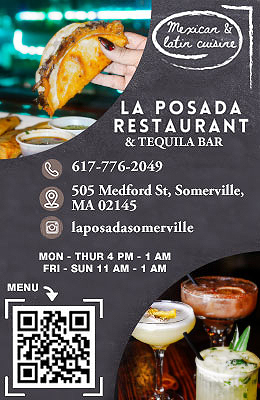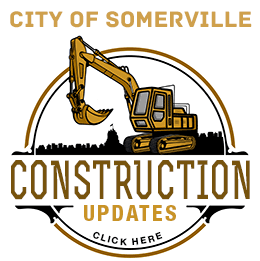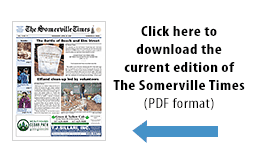
By Joseph A. Curtatone
(The opinions and views expressed in the commentaries and letters to the Editor of The Somerville Times belong solely to the authors and do not reflect the views or opinions of The Somerville Times, its staff or publishers)
Somerville and Cambridge share many things, including how we get across our common border. We share fourth place on the League of American Bicyclists’ list of American cities with the highest share of bicycle commuters (7.4% each), and we’re the only two Northeastern cities on that list. We’re proud of that achievement.
The cities now also share a bicycling-related tragedy. Both mourn the loss of Amanda Phillips, a beloved barista at Diesel Cafe in Somerville who died in a crash June 23 while riding in Inman Square, Cambridge. Amanda, who lived in Cambridge, was just 27.
It should never, ever have to come to this, but Amanda’s death should serve as a wake-up call to motorists, bicyclists, and pedestrians alike – as well as to our engineers, planners, police, leaders, lawmakers, and officials. With the exception of limited-access highways, our roads in 2016 no longer belong solely to any single mode of transportation. This means each of us must be more alert and more aware as we move around the city. We must each be more informed about the multi-modal rules of the road. And our communities must design for and enforce safe sharing of our streets.
In Somerville we are, as a community, striving toward these goals. I’d like to share what we’ve been doing and encourage you to let us know where we can do more. I offer this information in a sincere and serious attempt to keep these efforts and this conversation moving forward. I do so with a sense of humility – the City of Cambridge is widely regarded as a national leader in transportation policy, but right now that matters little to a grieving family and a grieving community.
Along with our diverse community advocates, I have worked tirelessly as Mayor to make Somerville streets friendlier to bikes, wheelchairs, and pedestrians. And you agree: the SomerVision plan we crafted as a community calls for 50% of our trips to be made by bike, walking, or transit by 2030.
Our efforts to make Somerville more bikeable have taken place in tandem with record increases in local bike commuters, which have more than doubled in the last decade. Since 2010, the City has painted 40 miles of bike lanes (space marked exclusively for bicyclists) and sharrows (road markings indicating a shared environment for bikes and vehicles). We have 2.75 miles of off-street paths, and we’re working to extend the Community Path alongside the Green Line Extension. We’ve added hundreds of bike racks and strategically located bike corrals. And to help more residents, workers, and visitors put two wheels on the road, the City joined the bike-share program Hubway in 2012, and now has 12 stations and plans for four more in 2017.
You’ve probably seen the painted green squares on the road at key intersections. Called “bike boxes,” they allow bicyclists to line up ahead of motorists at a red light and get a safer head start once the light changes. They’re new, so motorists need to learn how to give priority to bicyclists using them. We also started Somerville Neighborways, a community-driven pilot program on residential streets such as Willoughby Street, Spencer Avenue, and Madison Street. Bump-outs, pavement stencils, and public art reduce car speeds on these streets, giving priority to non-motorized users who want a low-stress alternative to their destinations.
Our next big step in making Somerville safer for bicyclists takes place on Beacon Street, a route Amanda took regularly between her home and the Diesel in Davis Square. We have just begun a full-depth reconstruction of Beacon funded by MassDOT, and when it’s finished it will have the city’s first protected bicycle facility, an exclusive space for bicyclists that is physically separated from autos and pedestrians. Beacon Street is among the Commonwealth’s busiest bike corridors; we’ve counted 500 bicyclists an hour during the commutes. We must design for their safe passage.
Bike and pedestrian access is also being improved at McGrath Highway, where complicated and congested intersections with Washington Street and Somerville Avenue have long discouraged walking and biking. New accessible curb ramps, new pedestrian signals, and new bike boxes and bike lanes will help break down the barriers separating East Somerville and Brickbottom from Union Square.
Somerville saw a decrease in bicycle-related crashes in 2015: 56 compared to 63 in 2014 and 75 in 2013. Half of the crashes involving bicycles last year resulted in an injury, compared to injuries in just 10% of crashes involving only vehicles. The laws of physics favor the motor vehicle operator, so we must do more to even the odds. Recently, some of our larger City trucks have become equipped with side guards, which prevent victims in bike and pedestrian crashes from falling under the vehicle.
Along with other Greater Boston mayors, our Board of Aldermen and our excellent state delegation, I’m pushing for legislation on Beacon Hill allowing municipalities to set their own speed limits instead of the state. Studies have shown that injuries from a crash are significantly less likely to be severe or fatal when a vehicle is traveling at 20 mph versus at the common speed limit for most city roadways of 30 mph. As more cyclists and pedestrians of all ages take to our roads, we should be allowed to calm traffic to protect them.
But engineering goes only so far. We also need education and, when necessary, enforcement.
Over the last two years the Somerville Police have not only strictly enforced serious traffic infractions, such as when cars cut off bicyclists, they are out on the streets actively working to educate drivers and bicyclists on how to share the road. Officers have stopped hundreds of travelers and handed out pamphlets as well as citations. They were stationed at some of the city’s trouble spots for bicycle-vs.-vehicle crashes, like Beacon Street, Davis Square, Somerville Avenue, and Webster Avenue. And bicyclists running red lights are pulled over and warned or ticketed just like motorists.
We’re also teaching our children how to navigate the streets. Every fifth-grader receives bicycle riding and safety training in physical education class, and pedestrian safety training is available to second-grade classes.
Getting the word out matters. Our police are taking life-saving, share-the-road information right to the commuters who need it most. Our planning staff have printed thousands of educational safety posters in four languages and distributed them through the public schools and other public buildings. The volunteers serving on our Somerville Bicycle Advisory Committee work tirelessly to host monthly commuter breakfasts, happy hour “Bike Talk” lectures, and even hand out fliers to motorists waiting at red lights. New voices and volunteers are always welcome.
At the end of the day, we are a group of 80,000 neighbors, and each of us can commit to stay informed, alert, and responsible on our streets. As Mayor, I commit to you that the City will continue to redouble its efforts to promote safety and accessibility for all. Please be safe, be respectful, and remember the families and friends who are grieving Amanda Phillips and others like her in Somerville, Cambridge, Boston, and beyond.















1. Sharrows serve no real use. Spend all that money somewhere else.
2. The green ‘bike boxes’ in front of cars at an intersection is a terrible idea. No cyclist wants to be moved from the extreme right into the middle of traffic lanes. The ‘head start’ they get when the light turns green lasts about 4 seconds, and then the cyclist is surrounded by moving vehicles, trying to get out of their way. Who thought this up? Please ditch this idea.
3. Dedicated bike lanes of any kind are critical. Amanda’s tragedy began when she was doored from a parked car. Anything that creates a clear and obvious lane for bicycles only will help prevent another tragedy.
4. Fix the potholes! A 2″ deep pothole, even if it’s only a few inches wide, can throw a cyclist off of their bike. Potentially into the path of an oncoming car or breaking many bones. In Somerville, a cyclist cannot go for more than about 45 seconds without having to suddenly dodge an incredibly hazardous pothole. If the cyclist is on a downhill run, the danger is tripled. After dark, Somerville is a minefield.
5. Fix the potholes !!!!!
I totally agree about the sharrows, Right from the start. The money would hav been better spent putting a thin coat of asphalt on the side of the road where the bikers travel as that is usually the worst part of the road. It cost at least when it started $35000 for those little signs which are useless.
I ride every day, and the sharrows do work when they are painted green. I noticed differences as soon as they painted them – drivers are much more likely to yield and look for a cyclist when the sharrow is painted. The brighter and fresher the paint, the better, so please keep them painted My Mayor.
I agree, the sharrows *help* but they need to be maintained bright and they aren’t as useful as a separate lane.
Sharrows don’t feel like an improvement when I’m riding. The roads aren’t wide enough for traffic and bikes to ride side-by-side, and I’m concerned that advertising this feature as part of the bike commuter road system in Somerville gives a false impression of safety.
What are you doing to slow traffic down on Cameron Avenue? It’s probably the most dangerous residential street in Somerville.
People drive like maniacs down the road, with utter impunity.
I can’t remember a moment in the past 5 years when I’ve seen a car pulled over on Cameron Ave.
When are you going to instate some traffic calming measures? This has been a problem for years.
I agree about the sharrows (and potholes), but I actually love the bike boxes; I *want* to be ahead of cars when we’re all stopped at a red light so that they can see me, and so that I can take advantage of my faster acceleration to get into the intersection first. I’m not going to cut all the way to the middle of the lane when I get to a stop light, but I don’t have to – the bike box is the full width of the lane, so I can cut in just enough to be visible and then drift back right as I accelerate. And on busy streets where multiple bikes may be stopped, it’s nice to have a place where we all fit.
Lots of bikes run red lights illegally because they want to get out into the intersection before the cars start moving – bike boxes give people a way to do the thing that feels safest to them, *while still following the law*. That’s pretty neat.
Thank you for this article Mayor Curtatone. Unfortunately I witnessed this crash and saw Amanda underneath of the truck. It was horrifying to see someone else’s child be hit and killed by a truck, it’s something I know that both you and I and every parent lives in fear of. I am grateful that you are acknowledging the value of bicycle riders in our city. Thank you sincerely. I want to help promote and educate for bicycle safety and am ready to volunteer and help in any way.
Thank you Mayor and everyone in Cambridge and Somerville supporting a more bikeable environment.
I bike every day with my toddler son in Cambridge and Somerville and am relying on our ability to share the roads with cars. The more awareness of bikes the better, alongside courteous and contentious behavior on the part of all bicyclists, cars, and pedestrians.
In my travels, I’ve been amazed at how many major cities have totally separate bike lanes with dedicated bike traffic lights. Paris, Barcelona, Amsterdam, Montreal– it makes me realize how behind the times Boston is!
Sharrows are useless on major connecting roads like Elm St and College Ave. These are major cycling routes and they are major bus routes – and buses don’t mix well with bikes.
There isn’t room for a travel lane, bike lane and parking. Remove parking from one side of these roads, and you’ll have enough space for bike lanes in each direction.
It’s easy and all it costs is a little paint. Plenty of room on side streets for parking…
I am really surprised that there is nothing in this article promoting how cyclists can keep themselves safe. There are still so many cyclists that do not wear helmets, especially those who utilize bike-sharing programs. I am all for teaching motorists safer practices that favor the safety of cyclists, but cyclist also have to want to keep themselves safe.
As a Somerville resident who rides about 7,000 miles a year, I applaud the effort the city is obviously making to increase cycling safety and make the city more bike friendly. Having said that, to agree with some of the previous commenters: fix the potholes! Somerville has some of the most pockmarked, rough, pothole riddled, and downright treacherous streets to ride on two weeks in the Boston area.
Specifically: Highland Ave (neglected and in dire need to be resurfaced for as long as I can recall), and Powder House Boulevard (absolutely scary to ride – extremely narrow street with nearly no areas of safe pavement.
Dodging being doored, T-boned, or hit from behind in the city is stressful enough without the immense added burden of severely ill-maintained roads.
Fred
Don’t bike boxes encourage bicyclists to pass stopped traffic on the right side or weave between cars to get to these boxes? The concept of the bike boxes is great, but I am unsure if bicyclists are obeying city ordinances and state laws trying to get to them.
Thank you for facilitating this conversation. I bike everyday with a toddler on the back of my bike from Union, through Inman, to Boston. I have seen slight improvements in attitudes and awareness of cyclists change slightly. Sharrows, green lanes and bike boxes all promote the perception that bikes belong on the road. They don’t however prevent injury in the case of mistakes or outright aggression of drivers who aren’t interested in sharing the road. To make biking truly safe, Somerville needs protected bike lanes. I appreciate the discussion of physics and slowing down the traffic, but if my toddler is thrown off a bike into 20 mph or 30 mph traffic, physics of car vs body says it’s going to be bad either way. Please fix the potholes on Webster ave, and provide lanes separated and protected from moving cars and parking lanes in corridors throughout the city. I’m about one more fatality away from no longer being able to defend biking with a toddler which would put me back in a car commuting and creating traffic and greenhouse gas.
First of all, thank you for what you have done to improve Somerville’s bikeability. There are certainly some parts of town that are absolutely first-class and make me proud.
That said, awareness and safe riding skills are good and helpful, but proper bike-friendly infrastructure is even better!
I have three major complaints:
1) There are potholes everywhere, especially in the extreme right where cyclists ride. They are dangerous and we need to swerve and weave around to avoid them. They are a big hazard at night.
2) We NEED painted bike lanes at very dicey intersections like Cutter and Highland. That hateful thing forces cyclists to merge into the middle of a busy lane of traffic — on rough and hole-ridden pavement, no less.
3) Sharrows are insulting, especially on wide streets. To me, they are code for “the city didn’t care enough about my safety to paint a bike lane on the road, so I need to ride in the middle of the lane.” They are meaningless to drivers. I would be better protected by making ritual sacrifices to Cthulhu before heading out on my bike.
Dear Mayor,
As a former daily commute rider through Somerville and Charlestown, I can tell you what works and what doesn’t work. Parking and turning motor vehicles don’t mix with cyclists. Drivers unfortunately see cyclists as a nuisance. I personally was in an accident with a car turning in front of me. I was riding in the bike lane next to parked cars. It was very dangerous. Drivers never get tickets for unsafe movements. Drivers rarely use their turn signals. I loved my daily ride, but have moved from Boston to Scottsdale, Arizona. One of the reasons I chose Scottsdale was for the bicycle infrastructure, including a bicycle path with underpasses at every intersection. I know that you will do whatever is best. Thanks. See these links (Scottsdale) for how it is done right:
http://arizonabikeways.com/features/ffphx/northbanktempe/
http://www.phoenixnewtimes.com/arts/cycle-cruising-the-scottsdale-greenbelt-6559924
Reality is you are not going to educate a certain amount of people who either drive or bike. Whatever that number may be there will be aggressive driving and road rage. I think we are supposed to be the worst in the country for that. I have biked longer than probably most of the ages of the people on here and I am on the road daily due to my work. I do not know how some bikers are still alive due to motorists or their own fault. The police could never keep up with violations in this city. Both sides have many that completely ignore the rules. And also(for which some will hate me) I would never have a toddler on a bike. It is way too dangerous out there. And that’s not even counting the ones who are too impaired to be on the road.
CAP: If you see a pothole, call 311 or report it using the Somerville 311 app. I do this all the time, and they are promptly fixed.
Regarding the bike box controversy, I have personally found them useful in many situations. For example, when going across multiple lanes to turn left in Union Square, or to avoid conflicting with cars turning right at the green. The one at the bottom of Elm Street going into Somerville Ave is an exception – if multiple bikes show up (which happens a lot, this is a major bike route) and use the box the bikes end up trying to turn side-by-side or proceeding in a general tangle. It would make more sense for there to be a dedicated bicycle left-turn lane at this intersection, to keep bikes in sequential order. Without the boxes, bike often pull in front of cars and block the opposing crosswalk, or squeeze in next to cars uncomfortably if there isn’t a bike lane.